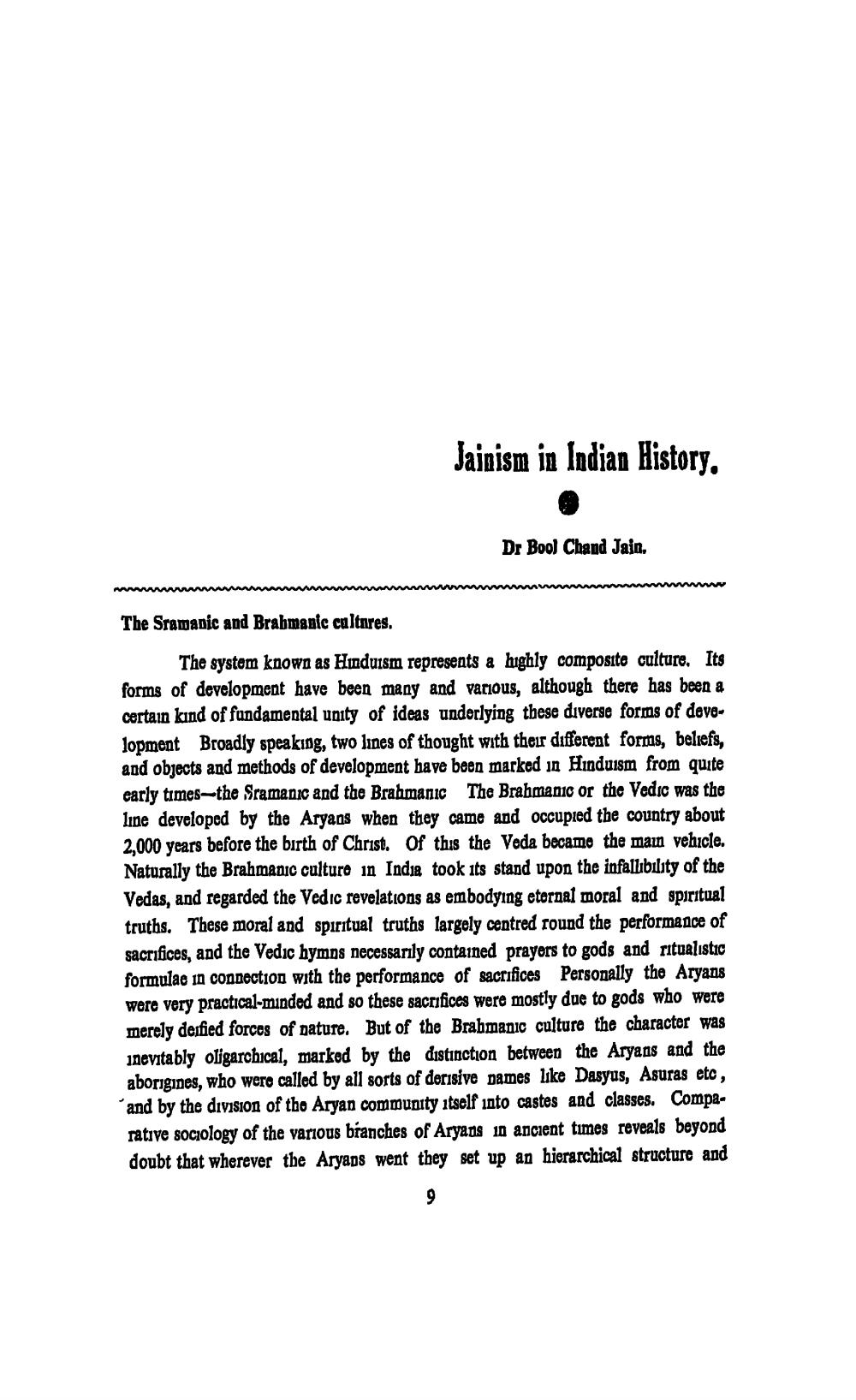________________
Jainism in Indian History.
Dr Bool Chand Jain,
The Sramanic and Brahmanic cultures.
The system known as Hinduism represents a highly composite culture. Its forms of development have been many and various, although there has been a certain kind of fundamental unity of ideas underlying these diverse forms of development Broadly speaking, two lines of thought with their different forms, beliefs, and objects and methods of development have been marked in Hinduism from quite early times--the Sramanic and the Brahmanic The Brahmanic or the Vedic was the line developed by the Aryans when they came and occupied the country about 2,000 years before the birth of Christ. Of this the Veda became the main vehicle. Naturally the Brahmanic culture in India took its stand upon the infallibility of the Vedas, and regarded the Vedic revelations as embodying eternal moral and spiritual truths. These moral and spiritual truths largely centred round the performance of sacrifices, and the Vedic hymns necessarily contained prayers to gods and ritualistic formulae in connection with the performance of sacrifices Personally the Aryans were very practical-minded and so these sacrifices were mostly due to gods who were merely derfied forces of nature. But of the Brahmanic culture the character was inevitably oligarchical, marked by the distinction between the Aryans and the aborigines, who were called by all sorts of derisive names like Dasyus, Asuras etc, and by the division of the Aryan community itself into castes and classes. Comparative sociology of the various branches of Aryans in ancient times reveals beyond doubt that wherever the Aryaps went they set up an hierarchical structure and




